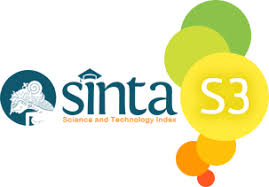Komunikasi Pemasaran Dinas Pariwisata Kabupaten Buleleng Dalam Meningkatkan Jumlah Wisatawan Di Buleleng
 Abstract views: 1567
,
Abstract views: 1567
,
 PDF downloads: 2211
PDF downloads: 2211
Abstract
By using a qualitative descriptive approach, this is to explore the activities of the marketing department of the Buleleng Regency Tourism Office in implementing marketing communications to increase the number of tourists. The tourism sector is one of the factors that influence the economy of Buleleng Regency. Through a good marketing communication strategy in marketing, the results will be good too, this will also increase tourist visits and help economic growth in Buleleng Regency. Similarly, tourism marketing aims to inform, persuade, introduce and increase tourist consumers so that prospective tourists have a desire to visit Buleleng Regency. The strategy carried out by the Buleleng Regency Tourism Office in increasing the number of tourist visits included advertising through television electronic media, online media, brochures, banners. Then face-to-face sales (Personal Selling) by introducing tourism products that are the object of tourist attractions. Furthermore sales promotion (Sales Promotion) through writing or direct communication, and publicity (Publicity) in the form of commercial news about products that are broadcast both through print media and electronic media. As well as direct marketing (Direct Marketing) is a form of promotion carried out by persuading prospective tourists. This can be done through writing that tells the experience on a personal blog. So that prospective tourists who want to go to Buleleng Regency can read someone's experience on various internet sites related to tourism objects, entrance ticket prices, locations, and so on. In addition, based on (Marketing Max) there are 13 elements including Products, Prices, places, promotions, people, physical condition, process, brand, segmentation, service, positioning, sales, and targets.
Keywords: Marketing Communication, Buleleng Tourism Service, Travelers
Copyright (c) 2019 Jurnal Komunikasi Profesional

This work is licensed under a Creative Commons Attribution-ShareAlike 4.0 International License.

Jurnal Komunikasi Profesional is licensed under a Creative Commons Attribution-ShareAlike 4.0 International License.
1. Proposed Policy for Journals That Offer Open Access
Authors who publish with this journal agree to the following terms:
- Authors retain copyright and grant the journal right of first publication with the work simultaneously licensed under a Creative Commons Attribution License that allows others to share the work with an acknowledgment of the work's authorship and initial publication in this journal.
- Authors are able to enter into separate, additional contractual arrangements for the non-exclusive distribution of the journal's published version of the work (e.g., post it to an institutional repository or publish it in a book), with an acknowledgement of its initial publication in this journal.
- Authors are permitted and encouraged to post their work online (e.g., in institutional repositories or on their website) prior to and during the submission process, as it can lead to productive exchanges, as well as earlier and greater citation of published work (See The Effect of Open Access).
2. Proposed Policy for Journals That Offer Delayed Open Access
Authors who publish with this journal agree to the following terms:
- Authors retain copyright and grant the journal right of first publication, with the work [SPECIFY PERIOD OF TIME] after publication simultaneously licensed under a Creative Commons Attribution License that allows others to share the work with an acknowledgement of the work's authorship and initial publication in this journal.
- Authors are able to enter into separate, additional contractual arrangements for the non-exclusive distribution of the journal's published version of the work (e.g., post it to an institutional repository or publish it in a book), with an acknowledgement of its initial publication in this journal.
- Authors are permitted and encouraged to post their work online (e.g., in institutional repositories or on their website) prior to and during the submission process, as it can lead to productive exchanges, as well as earlier and greater citation of published work (See The Effect of Open Access).



